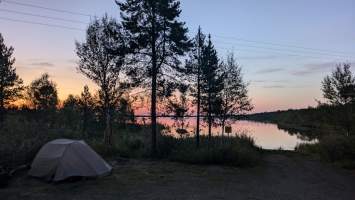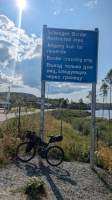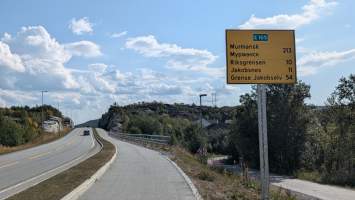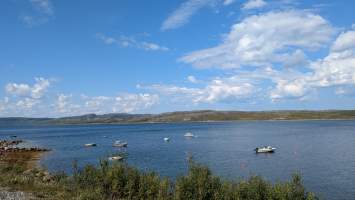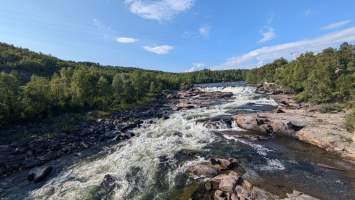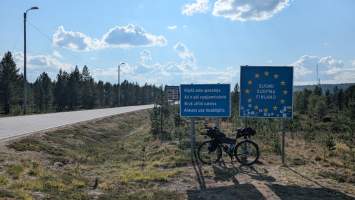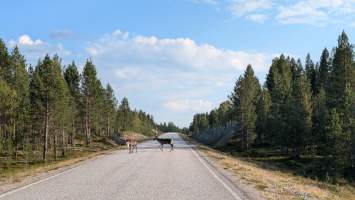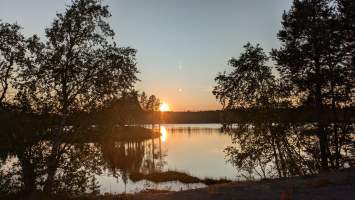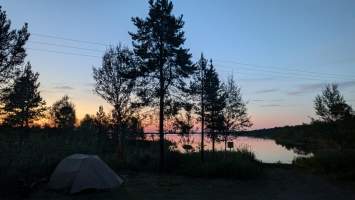The End
After a whopping three whole hours of sleep I disembarked the MS Richard With in Kirkenes. Since this is the final port of call of the coastal sailing route, almost everybody got off the boat at the same time and hundreds of tourists poured into the town.
The boat journey ends here, but the end of regular road traffic is just nearby at the Russian border, where I went next. Signage indicated in strong terms that the border control itself is off limits except for those who actually intend to travel on into Russia; most likely a measure to prevent tourists from interfering with the police on border duty. Which I don't intend to in the coming decade or so, thus I had to watch from behind the barriers. Not much traffic was crossing this Schengen border; in the twenty minutes I spent there I saw one marshrutka like mini bus enter Norway to drop off passengers, that was it. Back at the Kiwi market in Kirkenes the cashier told me that Russian cross border traffic had pretty much dried out since 2022. It was different before, as indicated by the Russian language road signage in the border zone.
From Kirkenes I followed the Varangerfjord back west. It is the last fjord I would see during this trip and marks the end of three weeks of cyclings on the Atlantic coast. The weather weather was still fabulous so the parting wasn't that sad. At the Munkelfjord, the innermost tip of Varanger, I bade the fjords goodbye and cycled up the Naatamojoki river towards Finland.
Finland
The Finnish-Norwegian border at this point is rather unusual in that the customs office is located a few kilometers from the actual border on the Norwegian side. The border road climbs up to around 100 meters and then stays around that altitude for a long time. Except for the town of Naatamo on the Finnish side there were no opportunities for resupply for the next 100 km or so, despite most of the road showing signs of settlements. Imagine having to drive fifty kilometers to buy some bread – the mindset needed to live in this remote area all year is incomprehensible to me.
The scenery changed drastically since I left the Norwegian coast. Not only do the birches grow six, seven meters tall here, there are also vast pine forests. Bare rocks are scarce as most of the ground is covered in soil. The lakes were incredible at least until I reached lake Inari, with sandy beaches and plenty of resting areas on the road to sit for a while and soak in the beauty.
When I reached Lake Inari this changed, however, and not for the better. The lake was not just inaccessible, it was barely even possible to see from the road which mostly stays clear of the shore of the lake. What's more most of the area around the lake is private property and roads that lead to the water are blocked. Not ideal conditions for camping! I had intended to pitch my tent here somehere on the shore but couldn't find a suitable spot anywhere. I had already passed the lake when I stumbled on a small roadside area that fishers use to launch their boats.
The cyclists who told about their time in Finland consistently mentioned how bad the insect situation was in the country. It really was every bit as bad as they said. Under constant attacks from ferocious mosquitos I pitched the tent in record time. The upside was, I guess, that despite walking through the tall grass for a bit I could not find any ticks on my mosquito bite ridden legs. Now that is what I call good news!
